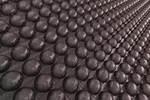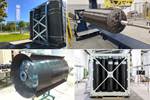Luxfer Gas Cylinders awarded grant for 700-bar Type 4 tank development
Alberta Innovates initiative selected 20 applicants, including Luxfer, to advance hydrogen production, storage, transmission, distribution and use.
Luxfer Gas Cylinders (Riverside, Calif., U.S.), a division of Luxfer Holdings Plc, a global industrial company innovating niche applications in materials engineering, has been awarded a clean technology grant from Alberta Innovates Hydrogen Centre of Excellence to support the development of a new Type 4 700-bar hydrogen cylinder.
The government of Alberta, through Alberta Innovates and Emissions Reduction Alberta (ERA), announced $57 million, worth $280 million, in innovation funding for 28 projects to advance a hydrogen economy, reduce emissions and create jobs in Alberta. Projects are to cover the spectrum of hydrogen production, storage, transmission, distribution and use. Through the Hydrogen Centre of Excellence – Competition 2, 20 applications were accepted for funding, including Luxfer (see others here).
Luxfer will use the Alberta Innovates grant to develop a polymer-lined, high-pressure hydrogen cylinder that reduces the number of components and amount of time to manufacture while also having the capability of storing gaseous pressure up to 700 bar (10,000 psi). The development work will take place in Luxfer’s Calgary, Alberta, facility.
This next-generation Type 4 hydrogen cylinder will play an important role in growth markets requiring lightweight, high-volume hydrogen storage solutions such as fuel cell transit buses, heavy-duty trucks, vans, bulk gas transport, boats and trains.
Luxfer Gas Cylinders designs and manufactures Type 3 and Type 4 high-pressure hydrogen cylinders for zero-emission fuel cell vehicles and compressed natural gas cylinders for low-emission vehicles. Cylinders manufactured by Luxfer are distributed internationally to integrators throughout the alternative fuel industry.
For related content, read “Verne receives Alberta Innovates award to demonstrate CcH2.”
Related Content
-
Composites end markets: Batteries and fuel cells (2024)
As the number of battery and fuel cell electric vehicles (EVs) grows, so do the opportunities for composites in battery enclosures and components for fuel cells.
-
Recycling end-of-life composite parts: New methods, markets
From infrastructure solutions to consumer products, Polish recycler Anmet and Netherlands-based researchers are developing new methods for repurposing wind turbine blades and other composite parts.
-
Composites end markets: Automotive (2024)
Recent trends in automotive composites include new materials and developments for battery electric vehicles, hydrogen fuel cell technologies, and recycled and bio-based materials.

















